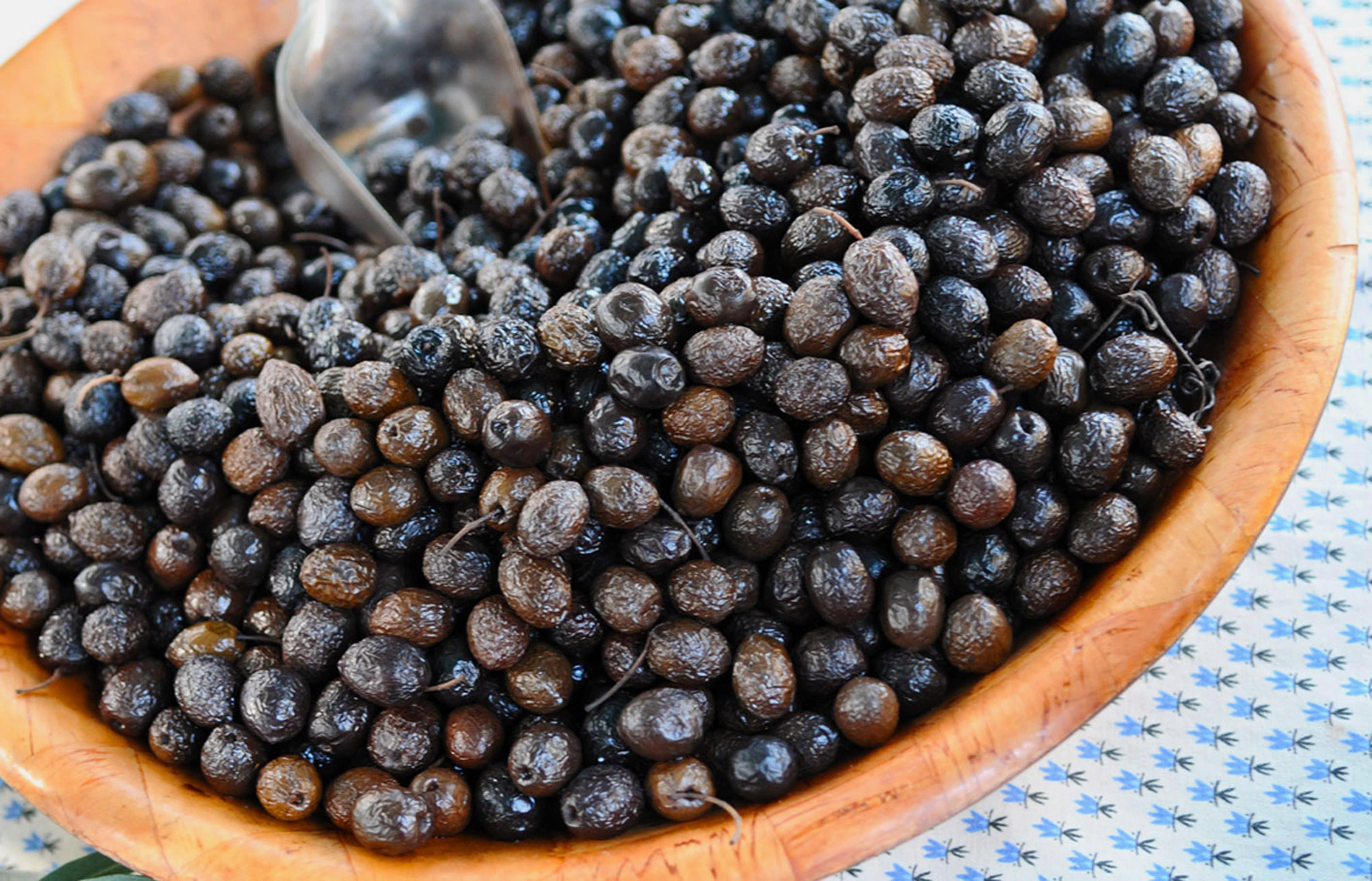Composition
Morphology of the fruit
The fruit of the olive tree, olive, is a drupe with pulpy flesh having different form, size and weight depending on varieties.
The average size is 1 to 3 cm long and 1,2 to 1,5 cm wide.
In longitudinal cut, we distinguish pericarp and kernel.
The pericarp means :
- epicarp which is the skin of the fruit, impermeable to water,
- mesocarp or pulp in which, during the ripening, small oil drops will be stored
- endocarp or stone which contains the kernel. The external face of the stone is dug of furrows. The number of furrows and the form of the stone are typical of the variety.
Good to know : the lipogenesis
The lipogenesis is the process which allows the olive generating the oil from August to November-December, date to which the oil content is at its maximum. This threshold varies depending on the variety and on the climatic conditions of the year.
Composition of olive
The water is the main component of flesh. It represents 70% to 75% of the total weight of the olive before lipogenesis, then it decreases regularly and at the same time as the increase of oil in the olive.
Fat represents 17 to 30 % of the fruit’s weight at ripeness. It is contained in flesh and kernel. Among fatty acids, oleic acid predominates in the olive.
The olive flesh contains about 1,5% of its weight under amino acids or proteins. Some of these proteins are water-soluble, some others aren’t. The main interest of proteins is for nutrition as it is made up of essential amino acids, necessary for human diet and for the growth of lactic bacteria.
Organic acids are spread in a small quantity in the olive flesh, the mains are citric acid, oxalic acid and malic acid. They take care of the pH homogeneity around 5.
Phenolic components are contained into the fruit in a quite high concentration representing 1,5% of the flesh weight. These components are partly responsible of the bitter and sweet and sour taste of fresh olives. The most important phenolic component is oleuropein which is responsible of the olive bitterness. Oleuropein is a specific component of olive which is not present in other fruits.
The vitamin A or carotene, C, B1 and E are present in the olive flesh.
The olive flesh is rich of inorganic substances such as potassium, calcium, magnesium, chlorine, phosphor,…









